Now we get into the part of my Ireland trip that includes several of the courses which Tom Doak described in the yellow Confidential Guide as ‘remote outposts of golf.’ My last five courses, Portsalon, the three at Rosapenna, and Narin and Portnoo are all in Donegal, the northwestern county of the Republic. Apparently when Doak visited them in the 80s and early 90s, they were all very rustic and of Portsalon, he said that much of it was buried in a drift of sand and he wasn’t sure that it was still there at all.
But in his quest to protect Irish links clubs from the EU regulatory agencies, Pat Ruddy convinced many of them in the late 80s and early 90s that they needed to build courses on their remaining links land now, or else looming regulations would mean that they would never be able to do so. That gave us some unfortunate new courses that would have been better left as sand dunes (Ballyliffin’s Glashedy Course), but also led to the updating of several existing courses, including Portsalon. Doak visited Portsalon again sometime in the late 00s and noted that while it had a few dull holes, Ruddy had transformed Portsalon into an excellent course, with outstanding views and a few outstanding holes to match.
I agree completely with Doak’s assessment. This is a fine course and probably the only course outside of what I’d consider the top tier of Irish courses that I played (Royal County Down, Royal Portrush, St. Patrick’s, Portmarnock, The Island) that wasn’t disappointing. While it doesn’t quite have the drama of Portstewart, hole-for-hole, it’s probably a sounder course. It’s true that the course gets a bit repetitive around the turn but apart from that, it has a fine and interesting mix of holes in the dunes near the coast and holes on hillier inland ground. Along with Ardglass and Narin and Portnoo, this is the only course that I played where a significant portion of the course is not on links land. And of these, Portsalon has by far the best inland holes. In fact what the strongest stretch of holes, 13-15, crosses hilly inland terrain.
Unfortunately Portsalon has the same negative as almost all of the other second tier Irish courses: it’s too expensive for what you get. While at 150 euros, it’s not as egregious as Portstewart (£235) or the Ballyliffin courses (180 euros for the Old, 200 for the Glashedy), I’d say that this course would be reasonably priced in the $125-145 range, not in the upper $100s. But if you’re an American who’s come all the way to Donegal to play golf, it’s a worthwhile stop. Stay at Rosapenna and take the 20-30 minute drive out here. It’s a bit different than most of the other Irish links courses and while a bit on the pricey side, it’s still definitely worth playing.
While I noted that 13-15 might be the strongest stretch of holes, for a two hole stretch, you can’t beat the openers. The ~355 yard opener (the scorecard is in meters) competes favorably with Ardglass and Royal County Down for the best opener on my trip. It’s only about 150 yards to carry the ditch, which is actually a walking path to the massive beach on the left. You want to keep your drive up the left here, which, if you hit it far enough will give you a view of the flagstick and from which you won’t have to cross as bumpy of terrain. The terrain walking from the fairway to the green and around the green is about as good as anything you’ll find anywhere.
But in his quest to protect Irish links clubs from the EU regulatory agencies, Pat Ruddy convinced many of them in the late 80s and early 90s that they needed to build courses on their remaining links land now, or else looming regulations would mean that they would never be able to do so. That gave us some unfortunate new courses that would have been better left as sand dunes (Ballyliffin’s Glashedy Course), but also led to the updating of several existing courses, including Portsalon. Doak visited Portsalon again sometime in the late 00s and noted that while it had a few dull holes, Ruddy had transformed Portsalon into an excellent course, with outstanding views and a few outstanding holes to match.
I agree completely with Doak’s assessment. This is a fine course and probably the only course outside of what I’d consider the top tier of Irish courses that I played (Royal County Down, Royal Portrush, St. Patrick’s, Portmarnock, The Island) that wasn’t disappointing. While it doesn’t quite have the drama of Portstewart, hole-for-hole, it’s probably a sounder course. It’s true that the course gets a bit repetitive around the turn but apart from that, it has a fine and interesting mix of holes in the dunes near the coast and holes on hillier inland ground. Along with Ardglass and Narin and Portnoo, this is the only course that I played where a significant portion of the course is not on links land. And of these, Portsalon has by far the best inland holes. In fact what the strongest stretch of holes, 13-15, crosses hilly inland terrain.
Unfortunately Portsalon has the same negative as almost all of the other second tier Irish courses: it’s too expensive for what you get. While at 150 euros, it’s not as egregious as Portstewart (£235) or the Ballyliffin courses (180 euros for the Old, 200 for the Glashedy), I’d say that this course would be reasonably priced in the $125-145 range, not in the upper $100s. But if you’re an American who’s come all the way to Donegal to play golf, it’s a worthwhile stop. Stay at Rosapenna and take the 20-30 minute drive out here. It’s a bit different than most of the other Irish links courses and while a bit on the pricey side, it’s still definitely worth playing.
While I noted that 13-15 might be the strongest stretch of holes, for a two hole stretch, you can’t beat the openers. The ~355 yard opener (the scorecard is in meters) competes favorably with Ardglass and Royal County Down for the best opener on my trip. It’s only about 150 yards to carry the ditch, which is actually a walking path to the massive beach on the left. You want to keep your drive up the left here, which, if you hit it far enough will give you a view of the flagstick and from which you won’t have to cross as bumpy of terrain. The terrain walking from the fairway to the green and around the green is about as good as anything you’ll find anywhere.
Tom Doak singled out the ~430 yard par 4 second as a great hole and I’d second that in the strongest possible way. To put it simply, this is in the top 10 holes I’ve played anywhere in the world.
It starts with what might be the single best drive that I’ve seen. Obviously it’s an incredible view over the beach and the river. Also obviously, it’s a diagonal carry over them and the more you carry, the shorter second you’ll have—a serious issue on a long par 4. And the carry distances are almost perfect. Short hitters don’t have to make any carry if they don’t want to, but then you have every length carry from 150 up to 270 depending on your preference. And the carry on the ideal line is about 240, which seems almost perfect for longer hitters. So blocking out everything on the right side, this is obviously a great driving hole.
But it’s what’s going on on the right side that brings it to yet another level. There’s a dune ridge running diagonally up the entire right side of the fairway. So the further you bail out to the right, the more likely you are to go over the dune ridge and have a long and blind approach. The only negative I’d note about that is that just over the dune ridge is the seventeenth fairway and there were a lot of people from this hole in the seventeenth fairway when I was playing that hole.
If you’re a long hitter, the drive is even more exacting because two high mounds narrow the fairway starting at just under 300 yards. If you hit driver and push it just a little, you’ll be stuck behind them…or maybe in them. If you want to fit one in the narrow opening between them and the fairway, you’ll have to make about a 270 yard carry and be very accurate. But if you hit the fairway, you’ll have a flat lie and a short shot into the green. So in short, this is an extraordinary driving hole for everyone.
It starts with what might be the single best drive that I’ve seen. Obviously it’s an incredible view over the beach and the river. Also obviously, it’s a diagonal carry over them and the more you carry, the shorter second you’ll have—a serious issue on a long par 4. And the carry distances are almost perfect. Short hitters don’t have to make any carry if they don’t want to, but then you have every length carry from 150 up to 270 depending on your preference. And the carry on the ideal line is about 240, which seems almost perfect for longer hitters. So blocking out everything on the right side, this is obviously a great driving hole.
But it’s what’s going on on the right side that brings it to yet another level. There’s a dune ridge running diagonally up the entire right side of the fairway. So the further you bail out to the right, the more likely you are to go over the dune ridge and have a long and blind approach. The only negative I’d note about that is that just over the dune ridge is the seventeenth fairway and there were a lot of people from this hole in the seventeenth fairway when I was playing that hole.
If you’re a long hitter, the drive is even more exacting because two high mounds narrow the fairway starting at just under 300 yards. If you hit driver and push it just a little, you’ll be stuck behind them…or maybe in them. If you want to fit one in the narrow opening between them and the fairway, you’ll have to make about a 270 yard carry and be very accurate. But if you hit the fairway, you’ll have a flat lie and a short shot into the green. So in short, this is an extraordinary driving hole for everyone.

You can try to make a carry of pretty much whatever length you choose here. But if you bail out too far right, you'll go over the dune ridge running parallel up the right side of the fairway into the seventeenth fairway. If you go for the longest carry and miss a bit right, you'll be stuck behind the two mounds in the center of the frame. This drive is a perfect 10.
…And actually the approach and the green are quite good too. The river crosses the fairway at about 350 yards but beyond that, it’s open ground to the green. As if it needed it, the green is one of the most interesting on the course, softly domed with lots of interior contour. Even without the rest of the hole, this green probably would have stood out to me as one of the best I saw on my trip. But it’s not likely to be what you remember about this hole.
If there were ever a course worth playing for one hole, it’s this course for this one. Fortunately many of the others are very good too, so let’s move on.
If there were ever a course worth playing for one hole, it’s this course for this one. Fortunately many of the others are very good too, so let’s move on.
We can see pretty quick that it’s not going to be too much of a letdown after that—the ~360 yard third crosses very fine links terrain. The green is in line with the left rough but—as I learned the hard way—you don’t want to try to cut it short. A drive up the right may leave a slightly worse view of the green but because the hole isn’t too long, just put one out there somewhere. The massive double green (shared with the ninth) is beautifully contoured.
Four is a mid-length par 5 that looks fairly similar from the tee. The green should be very reachable if the wind isn’t unfavorable and you can shorten the approach again by cutting up the left. The second is very forgiving for those who can’t reach the green as the fairway is shaped like a half-pipe. But the noteworthy thing here is just how interesting all the little rumples in the fairway are. Links terrain at its finest.
We reverse direction for the ~200 yard par 3 third. While it’s challenging, this isn’t my favorite hole because while the green site in the dunes is great, the green itself looks kind of like a table top. Ruddy should have tried harder to blend the green in better to its surroundings.
While the layout of the ~450 yard par 4 sixth is similar to the third and the fourth, it gives you a great view of the beach. The drive requires some accuracy but the real difficult is in the approach, which is probably the course’s most difficult. The green is narrow and sits up on a ridge, with run-offs at the front and right. It’s probably on the cusp of being too severe but the pitch from short isn’t too hard and it’s a good place to miss (much better than missing right).
Through the dunes again on the ~390 yard seventh, but this time the hole bends a bit to the right. The green is elevated again but it’s a much broader target than the previous one.
The ~530 yard par 5 eighth isn’t too difficult, but it’s a good hole crossing more fantastic terrain. It’s becoming clear at this point that while there are a lot of holes that don’t have much going on design-wise from tee to green, the contours in the fairways provide plenty of interest.
The hole doglegs left and there isn’t too much trouble if you hug the left side. The major feature here is a cluster of three bunkers in the middle of the fairway starting about 90 yards short of the green. Carrying these shouldn’t be an issue if you’ve hit a decent drive. The remainder of the hole is open into the green and it presents a good opportunity to make up a shot.
The hole doglegs left and there isn’t too much trouble if you hug the left side. The major feature here is a cluster of three bunkers in the middle of the fairway starting about 90 yards short of the green. Carrying these shouldn’t be an issue if you’ve hit a decent drive. The remainder of the hole is open into the green and it presents a good opportunity to make up a shot.
The drive is much tighter on the long (450+) par 4 ninth. There are staggered fairway bunkers, first right, then left, although the second is probably out of reach for all but very long hitters. The approach is pretty straight-forward but the green is quite narrow for such a long hole. But there’s no trouble short and it’s a good place to miss.
Ten is a lovely par 3 of about 155 yards—nice setting, well shaped bunkers given the surroundings. Just a nicely conceived and constructed hole.
The next two holes, a ~550 yard par 5 with a flat fairway and a dull ~180 yard par 3 over flat terrain are clearly the weak point of the course.
But then the character of the course completely changes and it gets very good again. I just loved the short par 4 thirteenth. It’s probably best to play it conservatively, laying up off the tee and then wedging on. But it’s also possible for longer hitters to drive one up near the green. To to that, they’ll have to be quite accurate because the fairway narrows to under 15 yards between trees on the left and dunes on the right at about 270. If you lay back, you must play up the right side or you’re likely to be at least partially blocked by trees.
The new green, set up to the left past a rock wall with trees framing the background, presents a very different look but the course is stronger for it.
Playing from up the hill over the thirteenth green, fourteen is also an excellent hole…but one which I really wish I had a second stab at. It’s clear that the hole turns right and that you run out of fairway on the left (at about 250). But what isn’t clear is that you also run out of fairway if you go up the middle and that you must cut at least some of the right side off. If you go up the middle, your ball can kick forward into some nasty long grass-filled hollows at about 270. There’s more room over the dunes right than you can see and at only about a 220 yard carry, it’s important either to aim right or hit something up the fairway with a cut. It’s a very good driving hole, but definitely one where you need an understanding of the lay of the land.
The approach is pure links, over bumpy terrain to a green that looks just to have been shaved down from its surroundings. It’s another excellent green on a course that probably has the best set of surface contours I saw on my trip, except for St. Patrick’s.
Teeing off right behind the fourteenth green and going back up the hill, the short par 3 fifteenth is another fine hole. While you need a solid shot to make it up there, this hole is made by its green, which may be the finest on the course.
The mid-length par 4 sixteenth shouldn’t be too hard…just don’t pull your drive. After the up-and-over blind drive the hole runs gently downhill over more modest farmland. But the approach over a creek framed by the picturesque village and mountains is certainly aesthetically pleasing, if not outstanding.
Seventeen is another reachable par 5 that doglegs left around a creek and gorse so while you’d like to be up the left side, there’s certainly risk in it. No matter where you drive it, you’ll probably have to contend with golfers playing the second hole who have driven it over the ridge into this fairway. The approach runs uphill and tilts a bit left. If you go for the green in two, be wary of the gorse on the left.
At around 400 yards and pretty wide open, eighteen is much more difficult than it appears. The first challenge—especially on into a wind quartering from the left, was carrying the very unusual sunken footpath that runs down to the beach and is a diagonal carry up to 230 yards if you go up the right side. This would make for a very challenging driving hazard…if it weren’t for the fact that it’s covered with a chain link fence and your ball will bounce off it if it hits it (evidenced by blue marks from the fence paint, which I know from experience).
The approach is over a very narrow creek but the green is broad and flat. Not the most inspiring finishing hole, but still one that presents a good challenge.
My initial impression of Portsalon was that it wasn’t too far behind either Portmarnock or The Island in quality. Revisiting it now reinforces my initial impression. While the number of outstanding holes is limited and many of the remaining holes are fairly similar from tee to green, most cross interesting terrain and the greens are consistently very good. This course reminds me of the Old Courses at both Ballyliffin and Rosapenna which are both over very good links terrain. But I think that the supporting cast of holes here is stronger than either of those courses because the dune ridges along the fairways create more interesting driving. Plus, the the greens are much better. And this course has one all-world hole and 3 or 4 other excellent ones, all of which those courses lack. So it's a much better course than those.
Upon reflection, I think I’m comfortable calling this the leader of the second-tier Northern Irish/Ireland courses, just ahead of Portstewart. It’s definitely not as flashy and many would dock it for feeling a bit repetitive from the middle of the front nine through the beginning of the back. But while it definitely doesn’t feel as repetitive, Portstewart’s back nine isn’t exactly full of great holes. And while the front nine has some fine holes and is memorable, this isn’t always for the best of reasons. With the exception of eleven and twelve, the Portsalon holes have interesting, often challenging drives over good terrain playing to good greens. It may not be as good for championship golf as Portstewart, but Portsalon strikes me as more solid throughout.
So if you go to Ireland with your golf clubs and make it as far as Donegal, be sure to play Portsalon. It’s an excellent complement to St. Patrick’s, which given the rankings is likely to make Rosapenna a common destination for American golfers (although it was surprisingly empty when I was there). But honestly, I think I liked Portsalon almost as much as I liked St. Patrick’s.
Upon reflection, I think I’m comfortable calling this the leader of the second-tier Northern Irish/Ireland courses, just ahead of Portstewart. It’s definitely not as flashy and many would dock it for feeling a bit repetitive from the middle of the front nine through the beginning of the back. But while it definitely doesn’t feel as repetitive, Portstewart’s back nine isn’t exactly full of great holes. And while the front nine has some fine holes and is memorable, this isn’t always for the best of reasons. With the exception of eleven and twelve, the Portsalon holes have interesting, often challenging drives over good terrain playing to good greens. It may not be as good for championship golf as Portstewart, but Portsalon strikes me as more solid throughout.
So if you go to Ireland with your golf clubs and make it as far as Donegal, be sure to play Portsalon. It’s an excellent complement to St. Patrick’s, which given the rankings is likely to make Rosapenna a common destination for American golfers (although it was surprisingly empty when I was there). But honestly, I think I liked Portsalon almost as much as I liked St. Patrick’s.







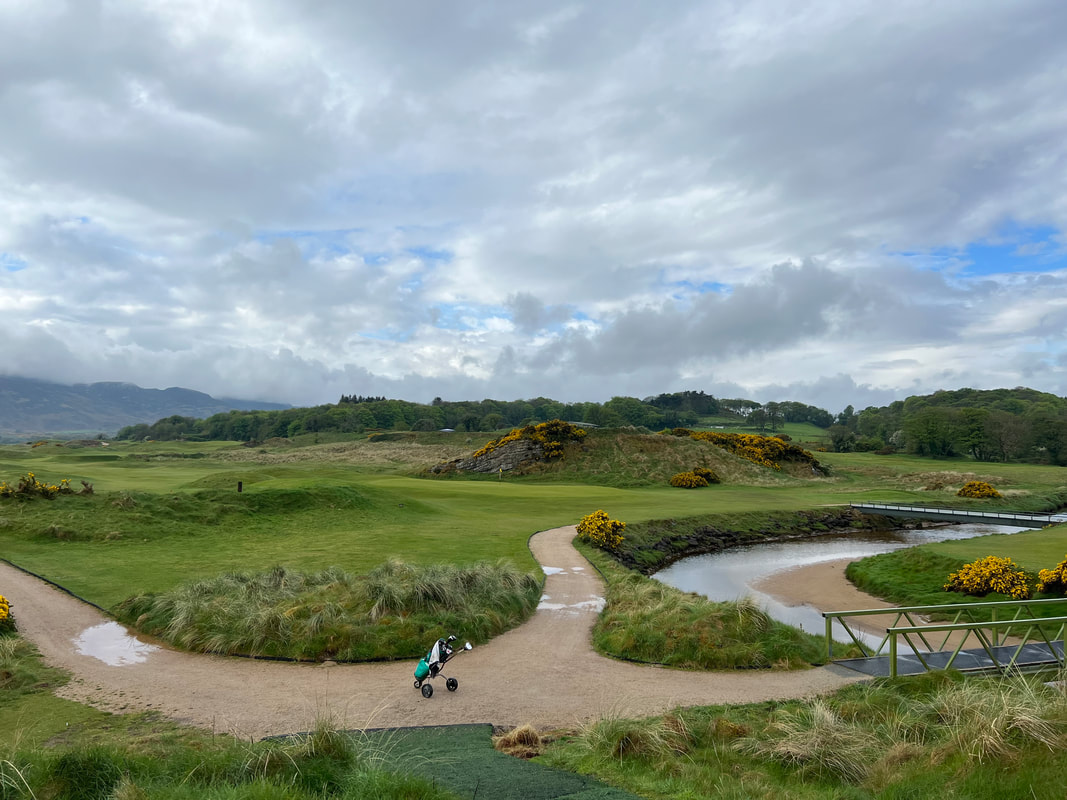


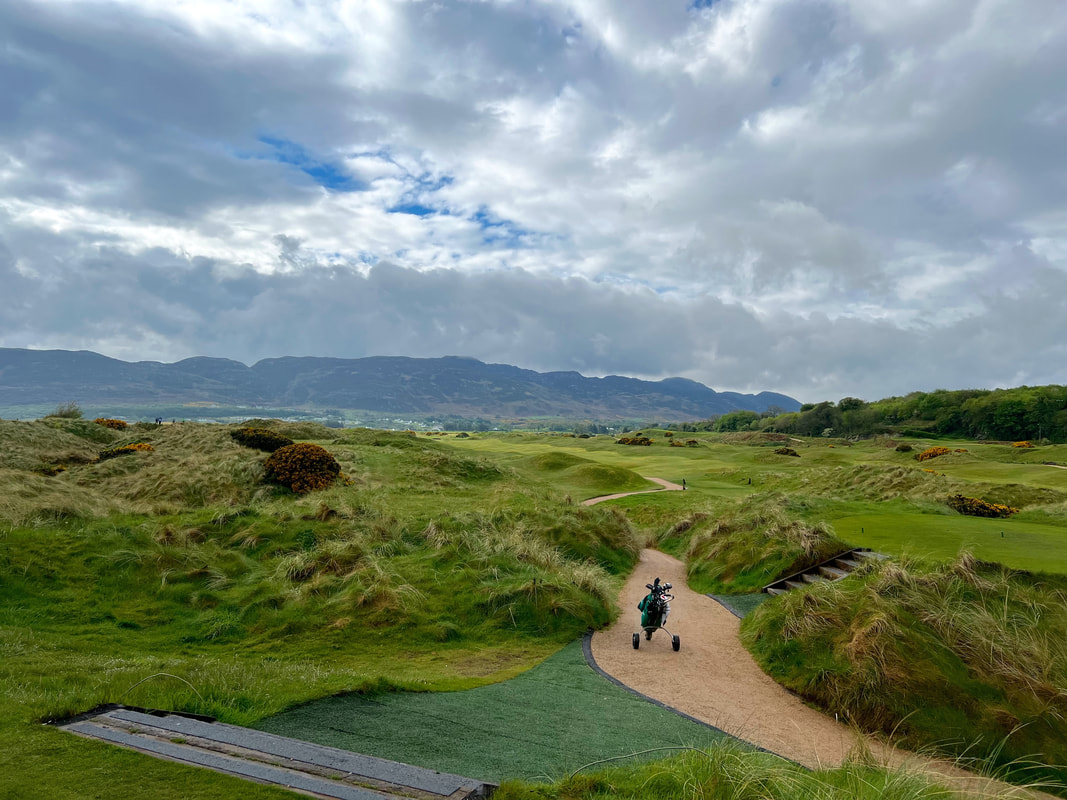




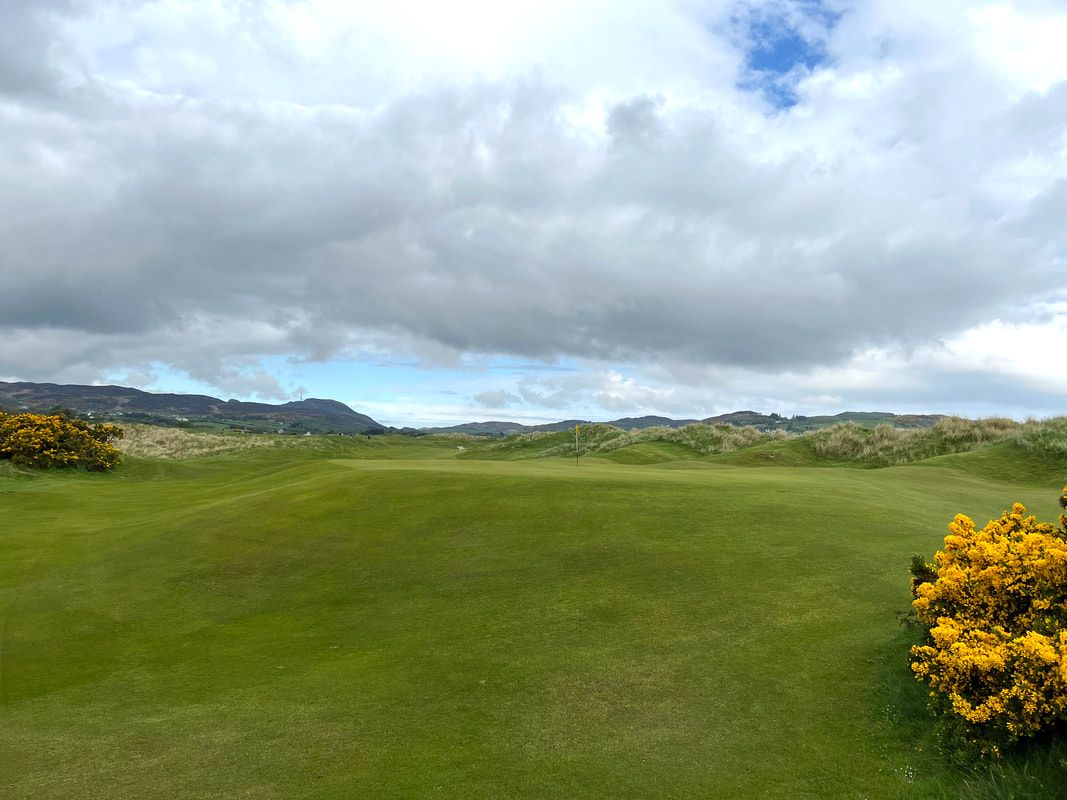
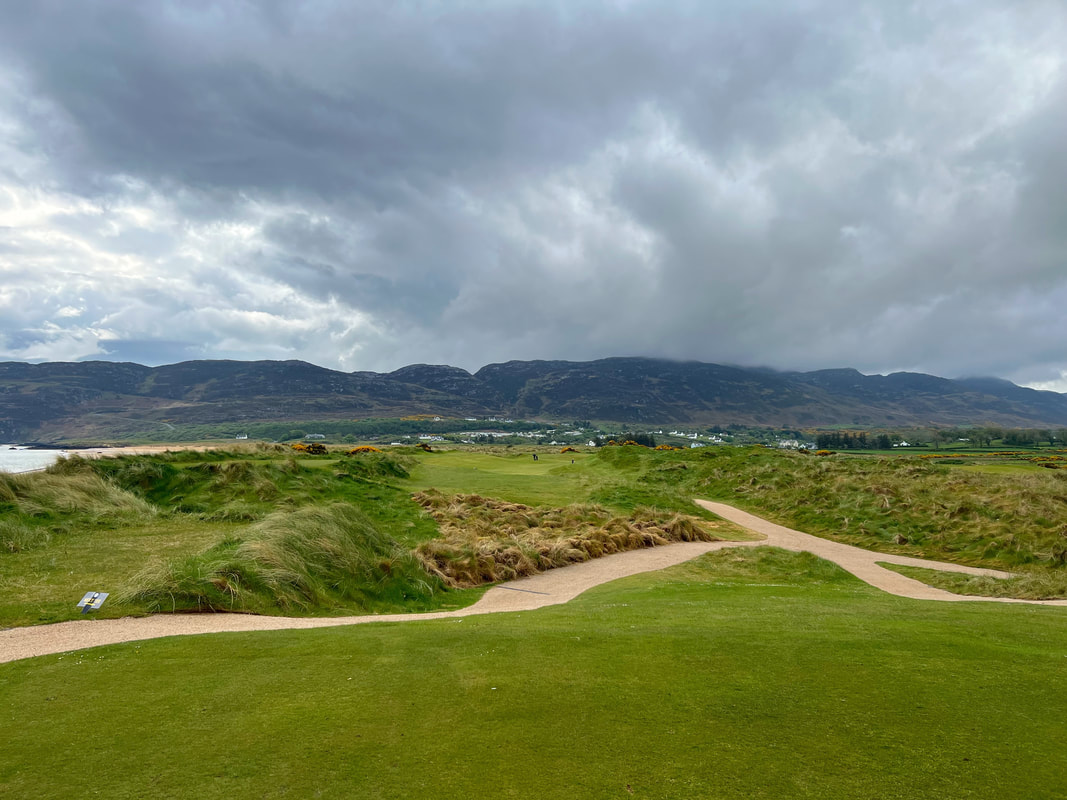



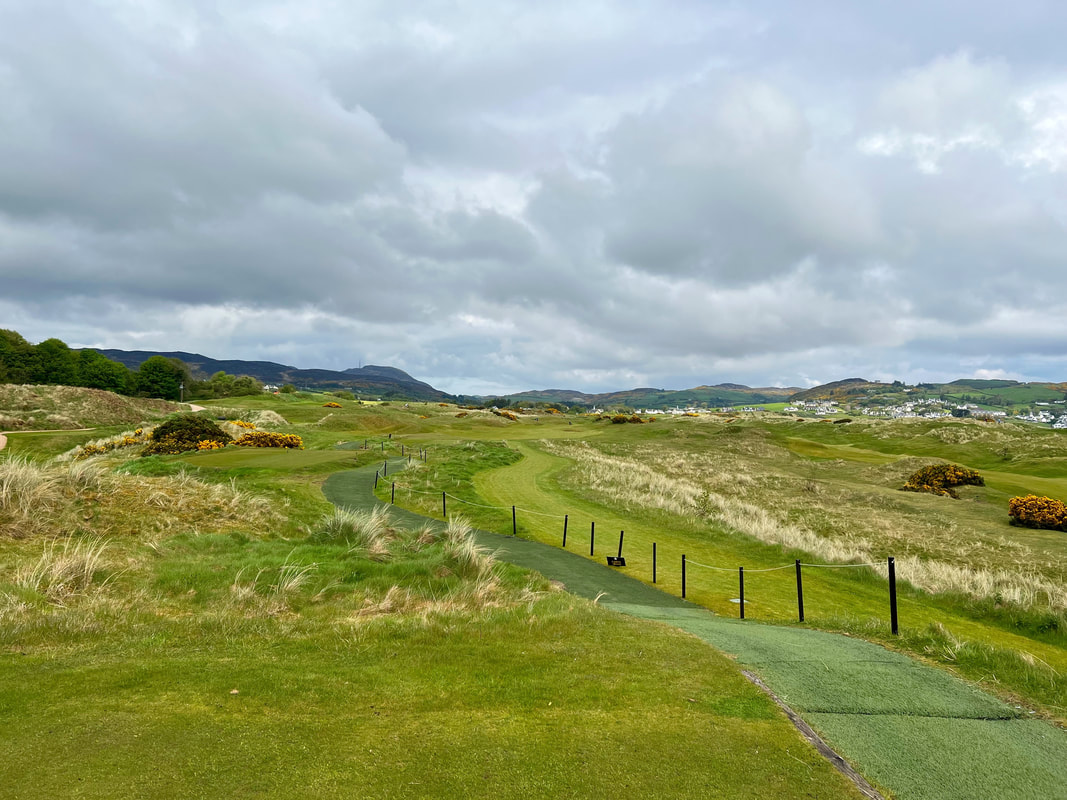





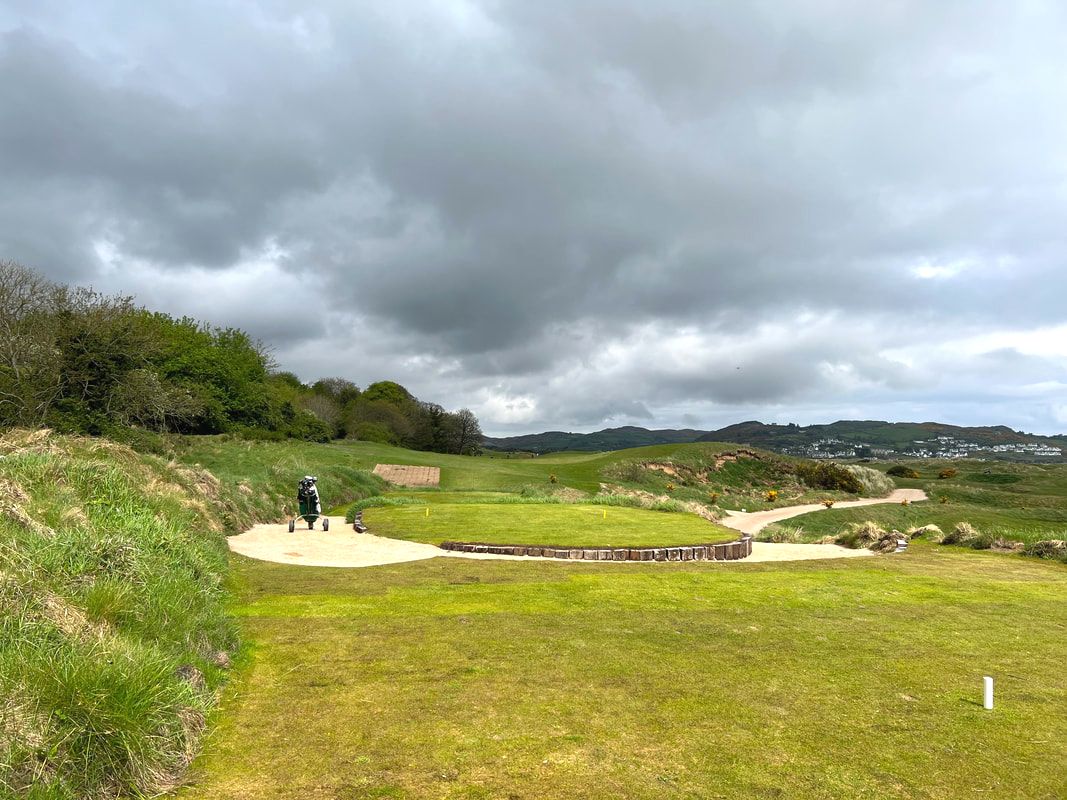

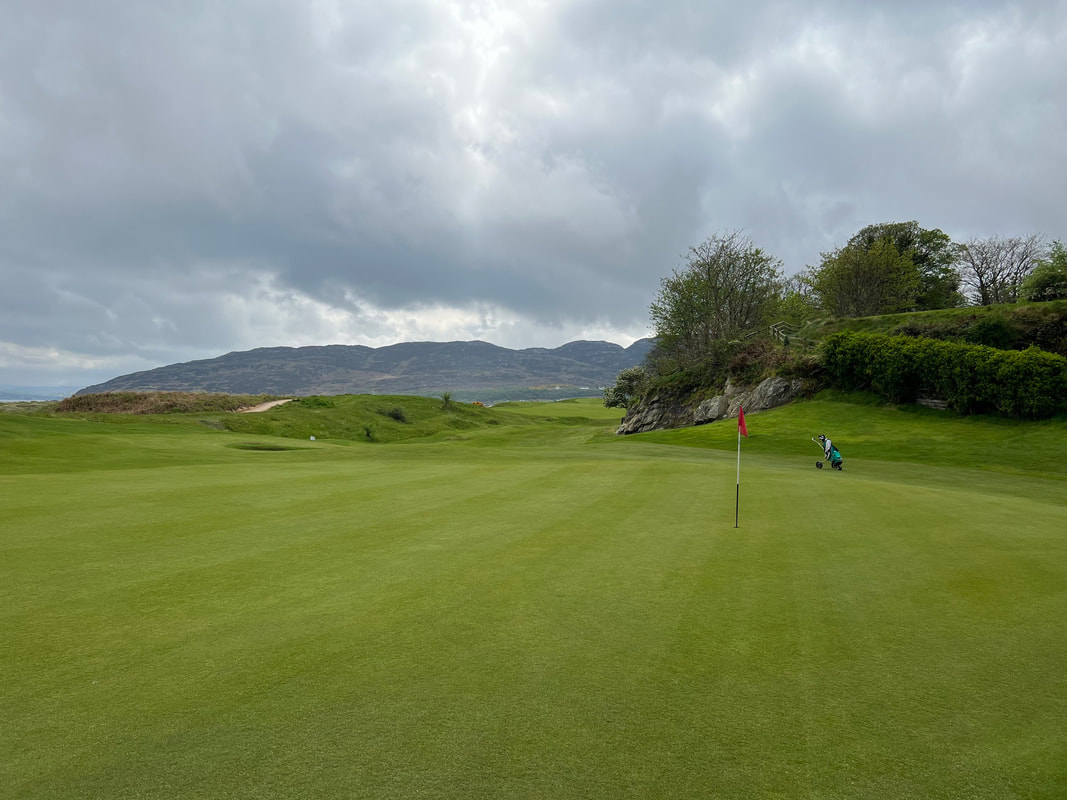












 RSS Feed
RSS Feed